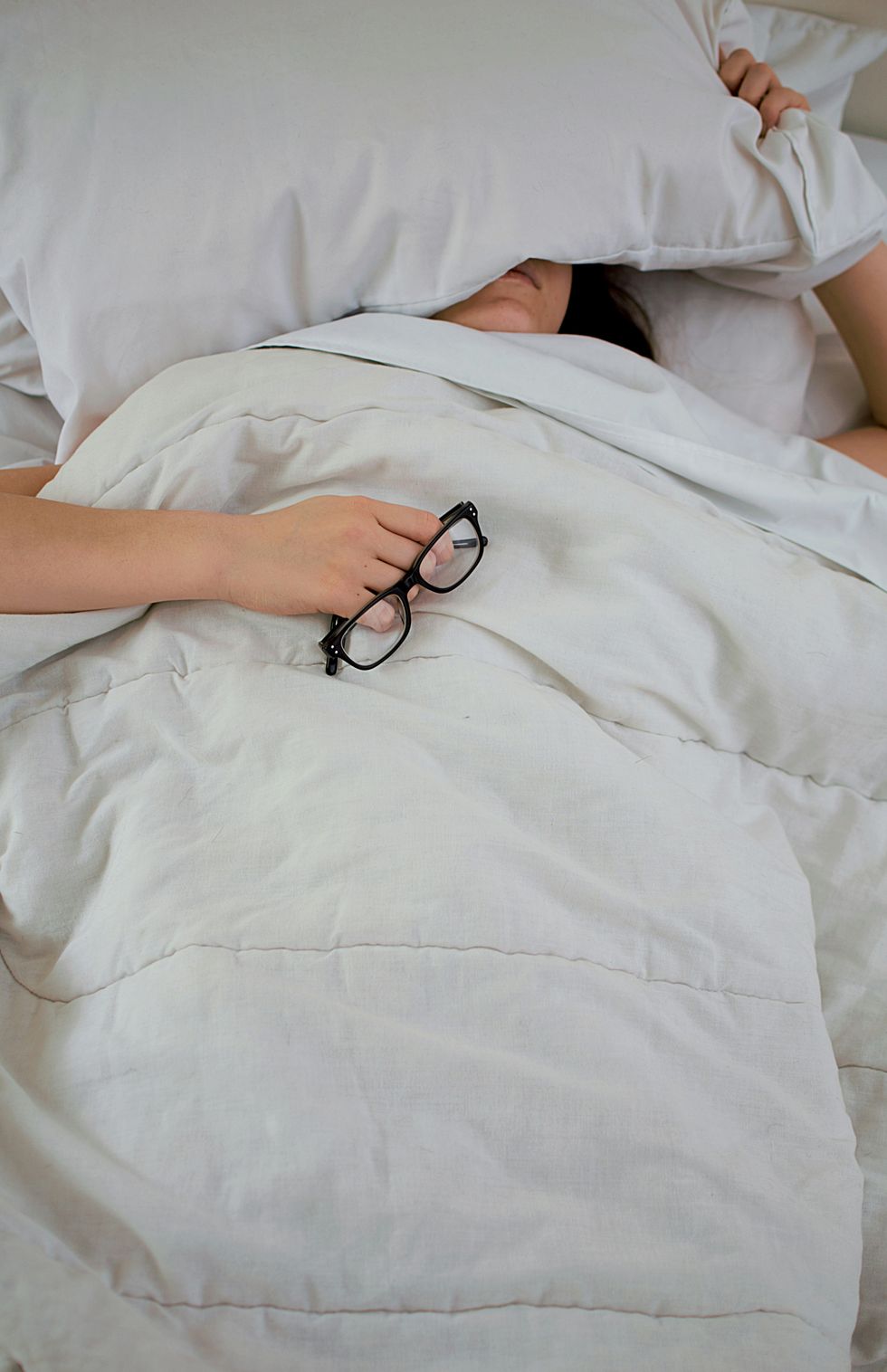At the beginning of summer 2017, I found myself in need of birth control. Like many other young women my age, I was looking at different forms and attempting to figure out what would work best for me. I stumbled upon an article one day about the intrauterine device (IUD), one of the most-used forms of birth control in Europe. It sounded pretty convincing to me. If I could go back in time I would tell myself, “You live in America, idiot--not Europe.” What works for one person doesn’t always work for another.
I chose the IUD for a few reasons other than Europe’s usage. According to Planned Parenthood, an IUD is a small, T-shaped device inserted into a woman's uterus that repels sperm. There are two types of IUDs: one of them releases hormones and can be left in for up to six years depending on the brand. The other type is wrapped in coils of copper, a more natural way to repel sperm, and can be left in the uterus for up to twelve years. They are both 99% effective. I liked the idea of having something more natural, uncomplicated and long-lasting inside of my uterus. My decision made, I headed off to the gynecologist to get the copper Paragard IUD.
The risks seemed minimal. The doctor told me she had done this at least 100 times. She herself had an IUD! The worst-case scenario is that it would poke a hole in my uterus and I'd need a small surgery. But there was one-hundredth of a chance of that happening. I'd be going back for a check- up in three weeks. What could go wrong?
So there I am with my feet up in the stirrups. The doctor says, “Okay you’re going to feel three cramps. I’ll tell you when each one is going to happen.” No one--not the doctor, not the nurse, not the internet--prepared me for how painful those three cramps were going to be. I was grasping onto that chair as if my life depended on it. I had never experienced that much pain in my life. After the doctor gave me fifteen minutes to lay and moan in agony, I walked at a snail's pace back to my mom in the waiting room.
The car ride home was unbearable. All I wanted to do was curl up in a ball. The second I got home, I took a nap to try and sleep off the pain. When I woke up a few hours later, I felt better. So, I popped some ibuprofen and decided I felt good enough to go to the barn and watch some riding lessons, see my friends and at least pet my horse, even if I couldn’t ride. While I was sitting in a comfy chair watching my best friend jump some horses, I made some small talk with an older woman there who also happened to have a IUD when she was in her early twenties. “Those horrible doctors don’t tell you how much it hurts. I think it was one of the most painful things I have ever experienced, other than childbirth,” she told me. Public service IUD insertion hurts like a bitch and no one tells you that.
I had that IUD for less than a month. During that time, it did prove its worth. After the insertion, things were pretty good. I didn’t have to worry about getting pregnant and I was set for the next twelve years...or so I thought. After insertion, I had what some people call a “gut-feeling," a feeling that something was going to go wrong. Sure enough, it did. Always. Listen. To. Your. Gut.
Less than a month later and one week before I started my freshman year of college, I woke up at around 6:30 a.m. to painful cramps. At first, I didn’t think much of it. I’ve woken up to cramps before, and it was around the time of my period. Plus, the doctor told me that the first few periods after the Paragard IUD are more "crampy" than usual. So, I popped a couple ibuprofen and attempted to get a few more hours of sleep. But sleep never came. By 7:30 a.m., I felt like I was in full-blown labor and let me tell you, if you’re not getting the miracle of life out of that amount of pain it just makes it that much worse. I was literally having contractions. I was bent over, grasping onto whatever was closest and (for the sake of my mother) I was humming Christmas songs instead of the long stream of swear words that were running through my head.
The emergency room is not that bad when you get pain medication. The doctors did a few tests to make sure I didn’t have an infection or a tear in my uterus. They sent me off to the gynecologist to get my IUD yanked out. The next day, I decided that I was well enough to go the Minnesota State Fair to watch my friends show their horses. Looking back on that decision, I realize I probably should not have done that. But, if you know anything about me, it’s that I can’t resist horses and fair food. I ended up going home early because I finally admitted to myself that I had a fever.
For that night and the next two days, I was bedridden. It was like I was in the Arctic one second, and then the Sahara Desert the next. I went to the emergency room again since I was having persistent fevers. It was anything but fun. They did some more tests to make sure my uterus was fine and then sent me home to bed. I can't count the number of nurses and doctors that have seen under my pants. At some point, you stop caring because all you want is to feel better. I finally felt 100% better the day before I left for college. I worked up the strength to drag my ass to Target to buy most of what is in my dorm today. It isn't much.
You could not pay me to get the IUD ever again. I am 100% over the idea of having a more “natural” type of birth control. If you really think about it, there is nothing natural about shoving something into your uterus, regardless of whether it releases hormones. A couple of weeks ago, I got the Depo-Provera shot, an injection of hormones and by far the least painful injection I have ever had. It felt like a mosquito bite and I haven’t turned into an Oompa Loompa yet, so things seem to be going well.
My advice for anyone looking for birth control options is to pick the IUD as a last resort and to go for the Depo-Provera shot instead. It’s almost painless and the only downside is that you have to get an injection every three months. Personally, I don’t mind that. That being said, I am just one person out of thousands that has had an experience with the IUD and, like I said before, what works for one person doesn’t always work for another. Don’t be afraid to explore your options, but be mindful and take into account the risks of each method.



 Photo by
Photo by  Photo by
Photo by  Photo by
Photo by 



















